The Brother ScanNCut uses a separate pen holder with specific sized felt tip ink pens to draw your designs. I want to plot electronic traces, but Brother doesn’t manufacture conductive ink pen cartridges so Denis and I began to hack together a solution.
First we took apart an existing pen holder and cleaned both the felt tip and ink reservoir to remove the factory installed ink.

For this prototype we used CUPro conductive paint from LessEMF in Albany, New York.
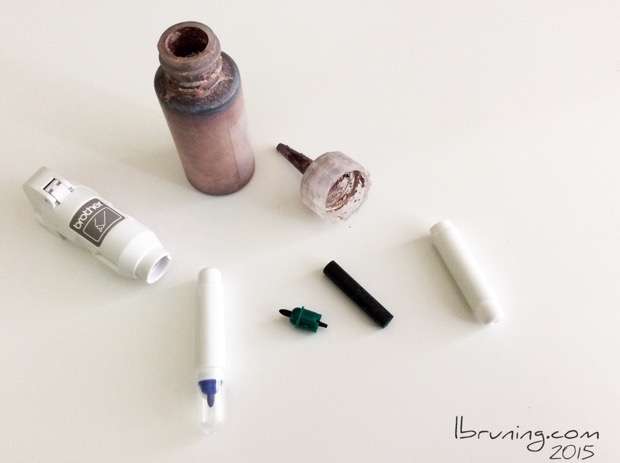
We filled the reservoir with CUPro paint.
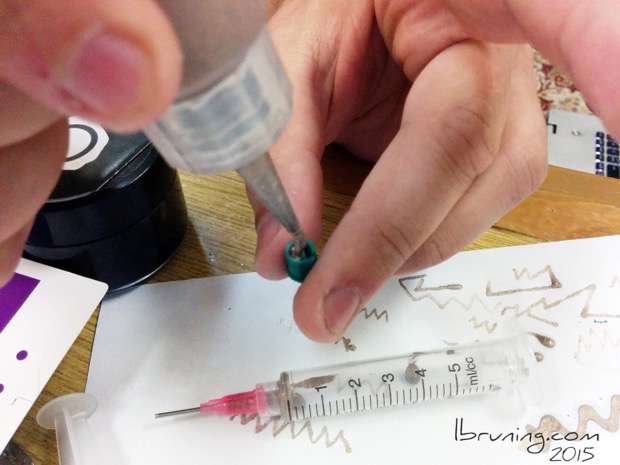
And we primed the felt tip with extra CUPro paint to help draw the ink to the paper surface and then place the hacked pen into the pen cartridge and into the ScanNCut chassis.
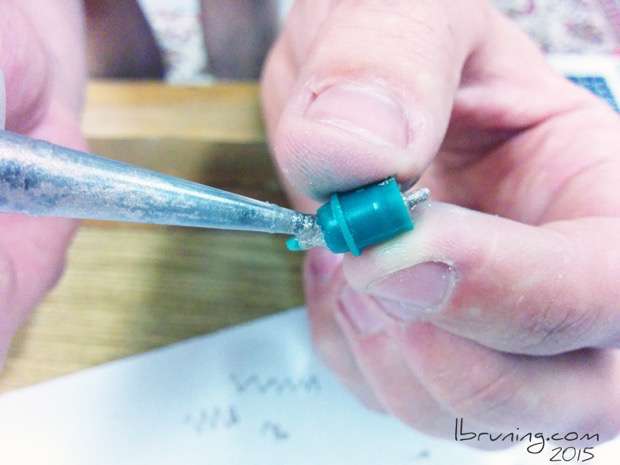
This prototype failed to draw functional conductive ink traces due to uneven ink flow.
FAIL.
next….
For this prototype we removed the felt tip from the pen nib and replaced it with a hollow syringe nozzle held in place with glue and tape.
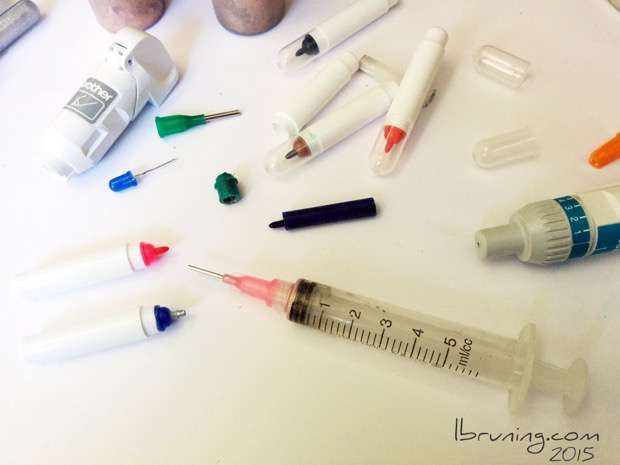
Hollow metal tip glued in place.
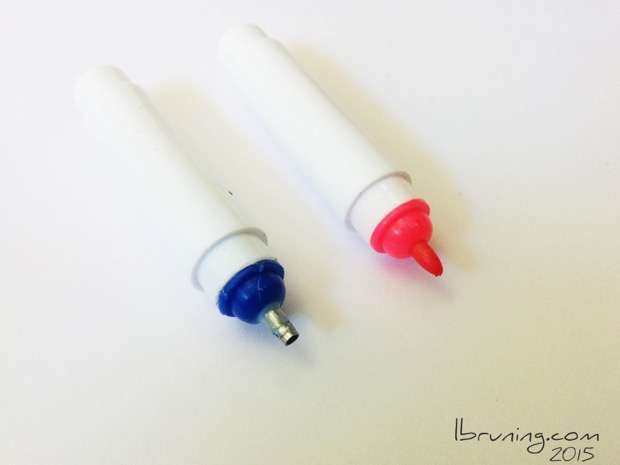
Unfortunately, this system also did not allow the conductive paint to flow freely to create a continuous trace and the resulting conductive ink line did not demonstrate continuity.
FAIL.
next……
For the third prototype we used Circuit Scribe pens from ElectronInk in place of the Brother pens. Circuit Scribe pens use a regular ball point system with a specialized conductive ink created by the Jennifer Lewis Research Group. This system would be a superior solution because the pen ink dries very quickly and doesn’t smear like the CUPro paint. On the flipside…this ink is more resistive than CUPro paint so the electronic trace has to be drawn repetitively in order to build up enough ink to make the electronics functional.
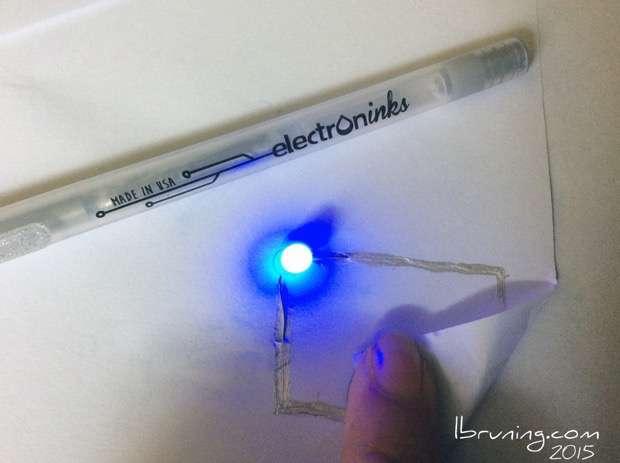
The pen’s diameter was too small for the pen holder cartridge and it slid thru the pen holder opening. We thought this might allow the pen to come in direct contact with the paper surface allowing for a continuous trace to be drawn.
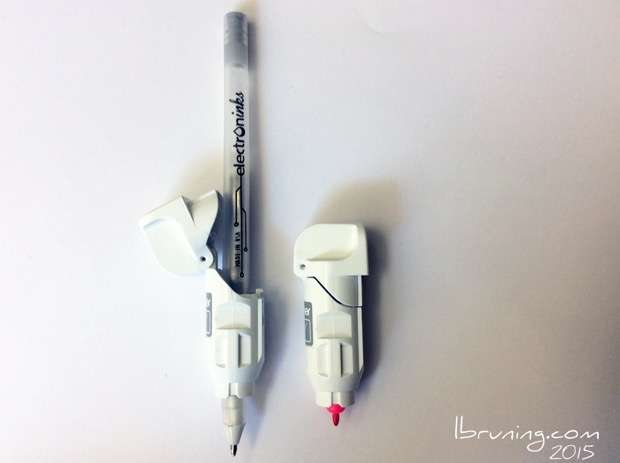
However….the pen holder and the plotter chassis appear to have a magnetic switch which disables the ScanNCut from functioning unless the pen holder is closed.
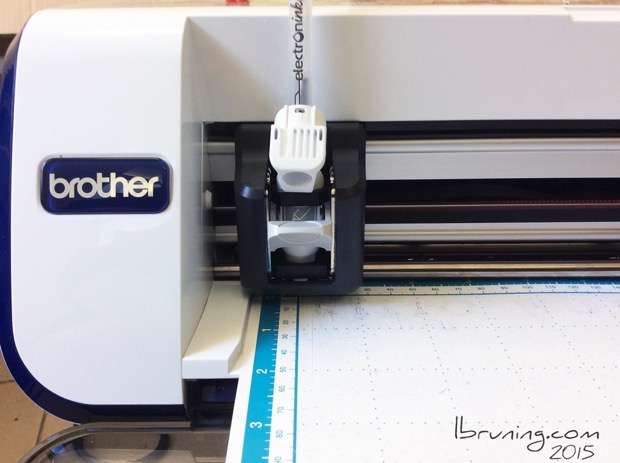
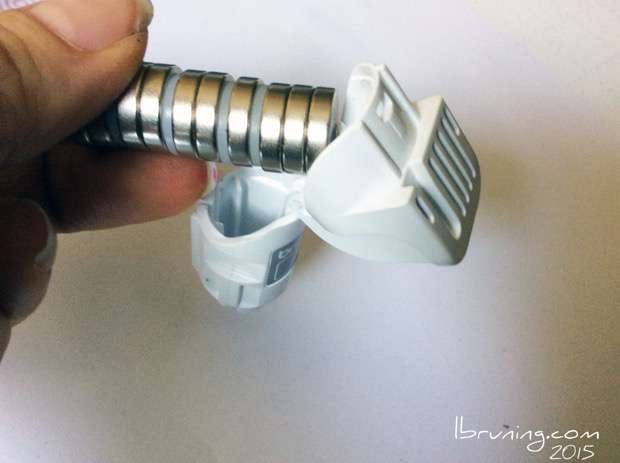
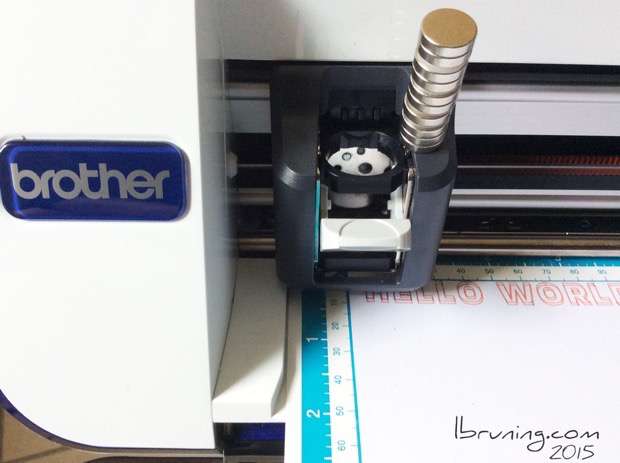
So we cut the Circuit Scribe ink reservoir to fit the height of the pen holder and then used glue and tape to hold the pen nib in place.
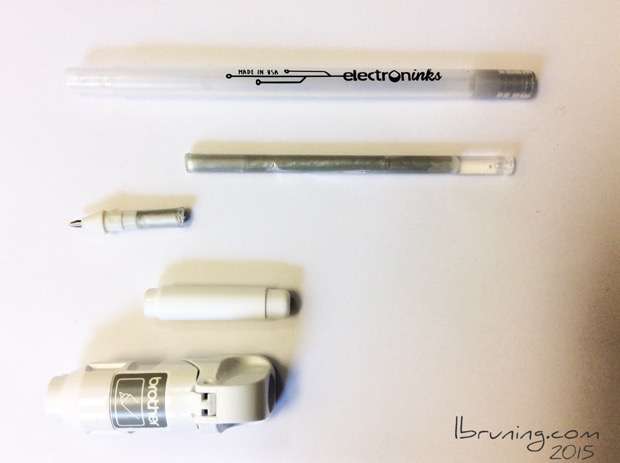
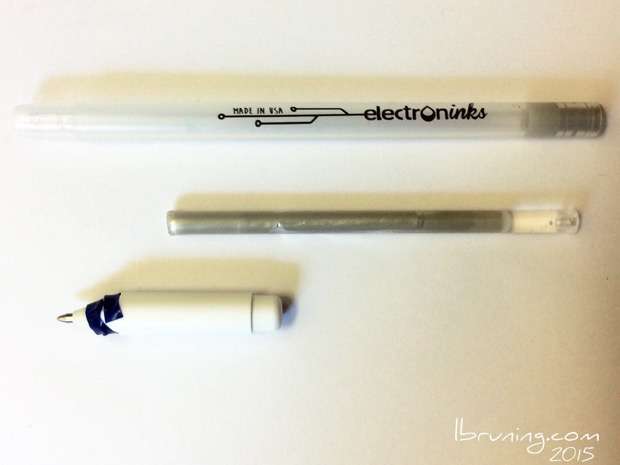
Once again we failed to draw a continuous functional trace. More prototyping needs to occur using ElectronInk with a focus on the pen distance from the paper during the plotting of the design.
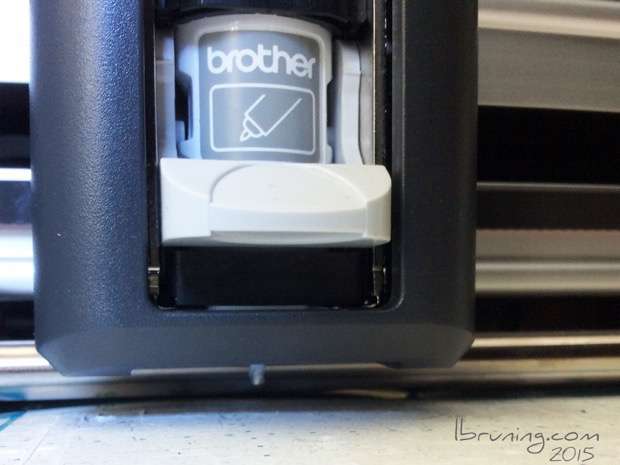
CONCLUSION:
More testing needs to be done investigating both the type of paint or ink as well as the delivery method.
Other research projects that may inform the next prototype from the Brother ScanNCut are:
Circuit Scribe has had successful results with the Silhouette Cameo youTube video 3 December 2013
Hackaday report 18 January 2015 shows HP plotter with CircuitScribe pen. They found that the trace had to be gone over five times before it was a continuous electronic trace.
















